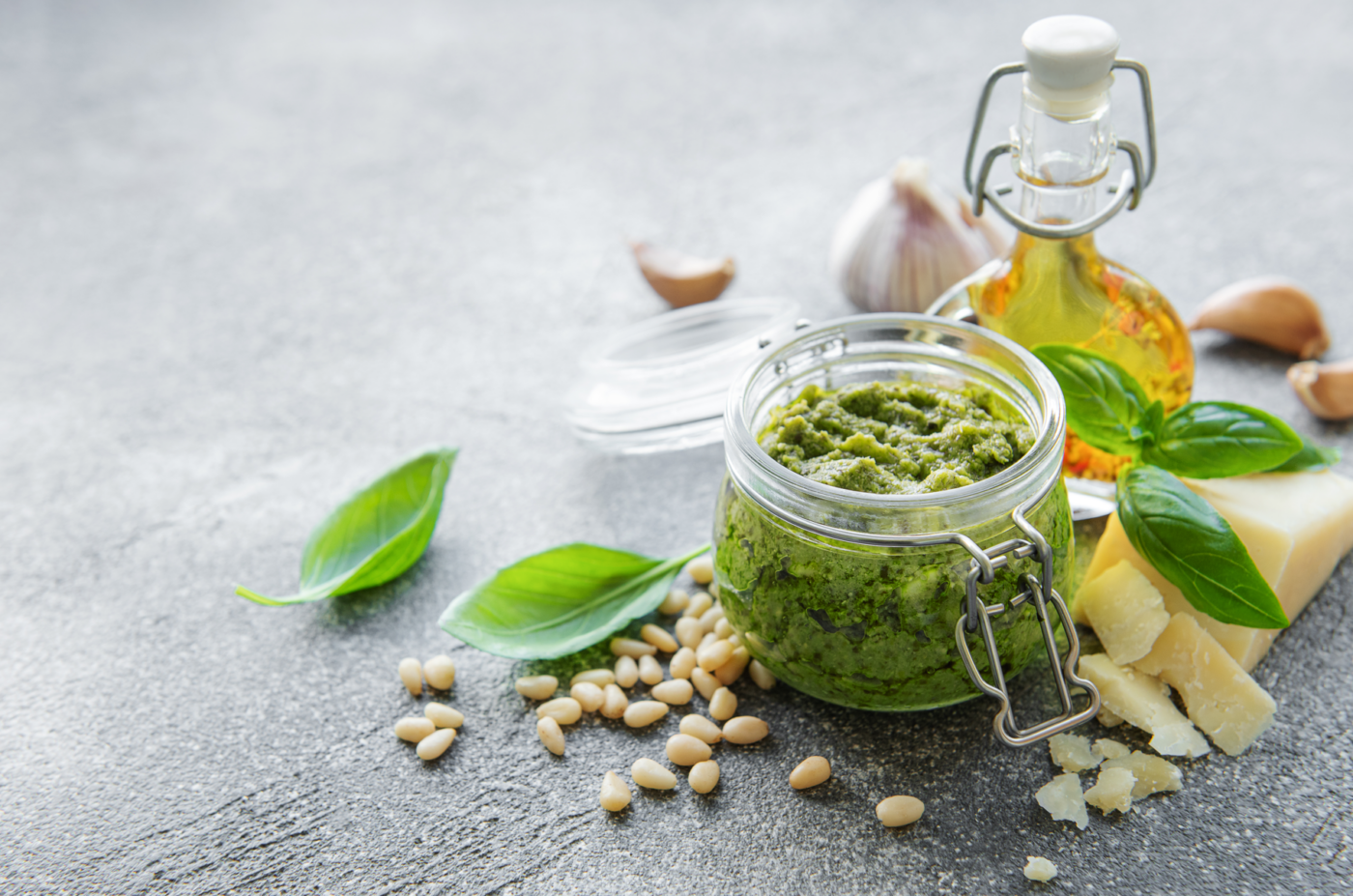A Brief History of Pesto
It originated in Genoa, Italy, and its history can be traced back to the Roman times. The word “pesto” comes from the Genoese word “pestâ,” which means “to pound” or “to crush,” referring to the traditional method of preparing the sauce with a mortar and pestle. Pesto was originally made with garlic, cheese, and herbs, and olive oil was added later. Over time, basil became the herb of choice for pesto, and pine nuts were added to the recipe. Today, pesto is a beloved Italian sauce that is enjoyed around the world.
Ancient Roots: The Precursor to Pesto
Long before the Italians claimed it as their own, the ancient Romans were enjoying a precursor to pesto. Known as moretum, this sauce was a rudimentary blend of herbs, cheese, garlic, and vinegar, sometimes with the addition of pine nuts. Described in ancient texts, it was likely a staple in Roman kitchens, eaten with bread or used as a condiment for various dishes. While simpler than the pesto we know today, moretum laid the groundwork for the flavor combinations that would eventually evolve into this beloved sauce.
The Birth of Pesto in Liguria
The story then takes us to the Middle Ages, in the coastal region of Liguria, Italy. Here, amidst the bustling port cities and fertile landscapes, pesto as we know it began to take shape. It’s believed that Arab traders, traversing the Mediterranean, introduced basil to this region. This fragrant herb, combined with locally abundant ingredients like garlic, olive oil, and cheese, formed the foundation of the pesto we love today. The unique terroir of Liguria, with its warm climate and fertile soil, proved ideal for cultivating basil, and the region’s culinary traditions embraced this new ingredient, incorporating it into their cuisine.
“Pesto alla Genovese”: A Recipe is Born
The first official recipe for pesto, dubbed “pesto alla genovese,” surfaced in a 19th-century cookbook. This recipe solidified the connection between this vibrant sauce and the city of Genoa. Interestingly, early versions of pesto included a mix of herbs like marjoram and parsley alongside basil, and sometimes even incorporated butter instead of olive oil, showcasing the evolution of this now-iconic sauce. As the recipe spread throughout Italy and beyond, variations emerged, each reflecting regional preferences and ingredient availability.
The Mortar and Pestle Tradition
The name “pesto” itself provides a clue to its traditional preparation. Derived from the Italian word pestare, meaning “to pound” or “to crush,” pesto was historically made by hand using a mortar and pestle. This laborious process, requiring patience and rhythmic pounding, yielded a unique texture and flavor, with the ingredients slowly releasing their essence to create a harmonious blend. While modern food processors have simplified the process, some purists still maintain that the mortar and pestle method produces the most authentic and flavorful pesto, arguing that the gentle grinding action preserves the integrity of the ingredients.
Pesto’s Global Rise
From its humble beginnings, pesto has transcended borders and become a global culinary sensation. While the classic basil pesto remains a favorite, countless variations have emerged, reflecting regional traditions and culinary creativity. Today, we find pesto made with a variety of herbs, nuts, and even vegetables, highlighting the adaptability of this beloved sauce. From sun-dried tomato pesto to pistachio pesto, the possibilities are endless, making it a versatile ingredient in kitchens worldwide.
Protecting Tradition: The Pesto Consortium
In Liguria, the birthplace of pesto, a dedicated consortium works tirelessly to preserve the traditional recipe and methods. They even hold an annual pesto-making competition, where participants showcase their skills with the mortar and pestle, vying to create the most authentic and flavorful pesto. This dedication to preserving tradition ensures that the legacy of pesto alla genovese continues to thrive.
More Than Just a Sauce
The journey of pesto through time is a testament to the enduring power of simple, fresh ingredients and the evolution of culinary traditions. It’s a story of cultural exchange, culinary innovation, and the deep connection between food and history. So, the next time you savor a spoonful of pesto, remember that you’re not just tasting a sauce, but also experiencing a rich culinary heritage that has been passed down through generations. Whether enjoyed with pasta, spread on sandwiches, or used as a marinade, pesto continues to delight taste buds and connect us to a long and flavorful history.


Share
Click on the icons below to share "Title of the item to share"